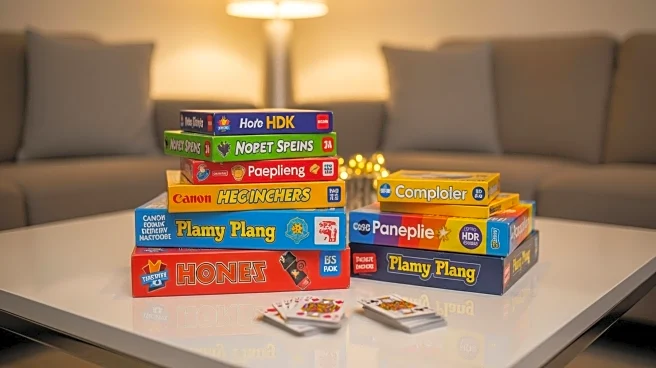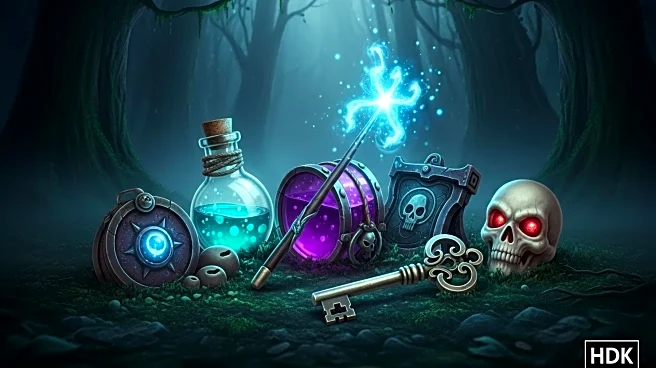What's Happening?
Netflix is expanding its gaming offerings by introducing five new party games for TV streaming, set to launch during the holiday season. The games include Boggle Party, Pictionary: Game Night, Tetris Time Warp, Lego Party, and Party Crashers: Fool Your Friends. These games are designed to be played using smartphones as controllers, providing an interactive experience for Netflix subscribers. This initiative follows Netflix's previous involvement in mobile gaming and represents a strategic move to diversify its content offerings and enhance subscriber engagement.
Why It's Important?
The introduction of TV-based games is a significant step for Netflix as it seeks to differentiate itself in the competitive streaming market. By offering interactive gaming experiences, Netflix can increase subscriber retention and attract new users, providing additional value to its service. This move aligns with broader industry trends of streaming platforms exploring interactive content to enhance user engagement. Success in this area could lead to new partnerships and revenue opportunities within the gaming sector, further solidifying Netflix's position as a leading entertainment provider.
What's Next?
Netflix plans to roll out these games on select TVs initially, with further expansion anticipated over time. The company will likely monitor user engagement and feedback to refine its gaming offerings and explore additional titles. As Netflix continues to innovate in the gaming space, it may seek collaborations with game developers to expand its library and enhance the gaming experience for subscribers. The success of this initiative could influence Netflix's future content strategy and its approach to interactive entertainment.
Beyond the Headlines
Netflix's venture into TV gaming could have broader implications for the streaming industry, potentially setting a precedent for other platforms to integrate gaming into their services. This development may also impact the gaming industry, as streaming services become new distribution channels for games, altering traditional gaming consumption patterns.










